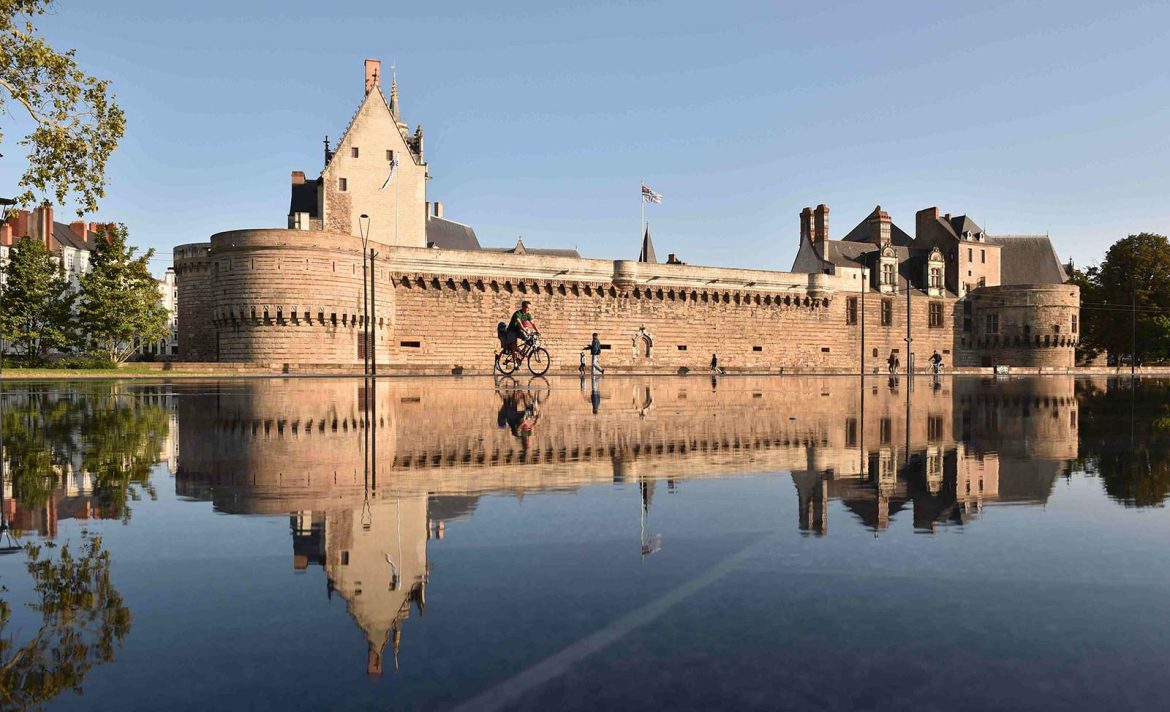Once an important port city, today it is a space for art, a playground for creativity. With works that are discovered by following the green lines .
A spontaneous forest grows between ancient buildings (“Jungle intérieure”, Evor) while on the sides of the tram tracks, small, bizarre-looking beings stare at you with their wide eyes (“The Humans” by Olaf Breuning). Some strange marine animals then invade the fountain in Place Royale (“Pacific” by Maen Florin) and, a little further on, a young girl steps down from the pedestal in “Eloge de la transgression”, by Philippe Ramette.
One could say that this «praise to transgression» is, at the same time, the title of one of this year’s works but also the mood of Le Voyages à Nantes , the event that every year transforms the French city into a huge playground for artists, who can give life to their creativity here and, in some cases, leave it in situ.
And so, even for tourists, it becomes a game to follow the green trail that winds through sidewalks, intersections, bridges and streets and that always leads to something new and unexpected. The works blend in with some of those from past editions, and obviously with the city context, which, as is easy to imagine, is also an integral part of the experience.
Nantes is located on the Loire estuary , which still flows under a large part of the city, and which since the Middle Ages allowed it to be the most important Breton port, as still testified by the ancient buildings built by sailors and merchants who had become rich through the Colonial Trade, which brought cotton, cocoa, coffee to Europe and slaves to the Americas (here remembered with the important Mémorial de l’abolition de l’esclavage ).
A history, that of the port and the shipyards, which has come down to the present day, to 1987 – symbols such as the imposing cranes on the Ile de Nantes remain – and whose dismantling has transformed, thanks to a true cultural and artistic revolution, the urban fabric of the city and has stimulated the imagination of architects, landscape architects and urban poets.
There are currently around 130 works scattered around the city , including coloured trams (Le Jardin Mobiles, Florian Viel), play areas, viewpoints (Belvédére de l’Hermitage, Tadashi Kawamata, open until 10pm in summer), universities (architecture, fine arts, graphics… here in front of In a silent Way by Nathalie Talec), department stores , shop signs, street crossings, cemeteries (Miror de s temps, Pascal Convert), hotel rooms and private collections (Collection des masques Peignon).
And you don’t even need to go around with a guidebook in hand — but maybe with the Pass Nantes for transport and visits, yes — and let yourself be guided by instinct around the city. From the shopping streets (where there is the European Thousand-Arms Classical Sculpture, Xu Zhen, the symbolic work of this year, to the medieval Quartier Bouffay , where the Castle of the Dukes of Brittany is located , then walking along the river, or arriving (by car) — there are 210 km of walks along the water’s edge — up to the works on the Estuary.
A stop is a must at Machines de Île . Ideally accompanied by Jules Verne, born in Nantes, who inspired it , you enter a world of fantasy and poetic mechanics. From Le Carrousel des Mondes Marins , where you ride strange marine creatures, to La Galerie , where forest ecosystems are on display, with chameleons, spiders and giant herons, up to the Grand Éléphant on which tourists from 12 meters high slowly move together with a mass of 48.4 tons. An emotion that even adults cannot resist.

